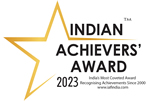Artificial Womb Technology: Analyzing the Impact of Lab-Grown Infants on Global Society
DOI:
https://doi.org/10.5281/zenodo.7673490Keywords:
Artificial Womb Technology, Pregnancies, ectogenic embryos, AI algorithms, infertile couples, Virtual Reality, preeclampsia, gestational diabetes, Fetal Health, Artificial Umbilical Cords, SurrogacyAbstract
This paper will explore how artificial intelligence-based systems can help this technological innovation advance medical science as well as how it can benefit humanity in terms of protecting our environment and promoting human growth. First, AI systems could be used to develop more efficient methods for creating ectogenetic embryos within laboratory settings. By using AI algorithms to analyze data from previous successful experiments with ectogenic embryos, scientists would be able to discover new techniques for creating viable pregnancies outside the body much faster than before, thus allowing them greater control over time frames during gestation periods without having any negative effects on the embryo's development or health outcomes upon birth. This paper imagines how artificial wombs, AI-based systems, and technological innovations in medical science could help reduce environmental impact in the future. An artificial womb would allow a fetus to develop outside of its mother’s body without any potential risks or complications associated with pregnancy or childbirth. It could also provide a more controlled environment that is free from pollutants, which can cause birth defects or other health issues down the line. In addition, AI-based systems could be used to monitor fetal development remotely while providing valuable data about each individual case, which can be used by doctors when making decisions regarding care plans for mothers carrying multiple babies at once as well as those who may have high-risk pregnancies due to existing conditions such as diabetes or hypertension. Finally, technological advancements in medical science will play an important role in protecting our environment by reducing preterm births and other related complications during pregnancy that often require additional resources, such as drugs that may harm ecosystems if not properly disposed of after use. Using these technologies together, we can create a healthier future where humans coexist harmoniously alongside nature while still enjoying all of its benefits without causing any additional harm. This article predicts the future of Artificial Intelligence in Artificial Womb Technology. This article will explore how Artificial Intelligence could impact the future of artificial womb technology and how it might be used in the near future.









